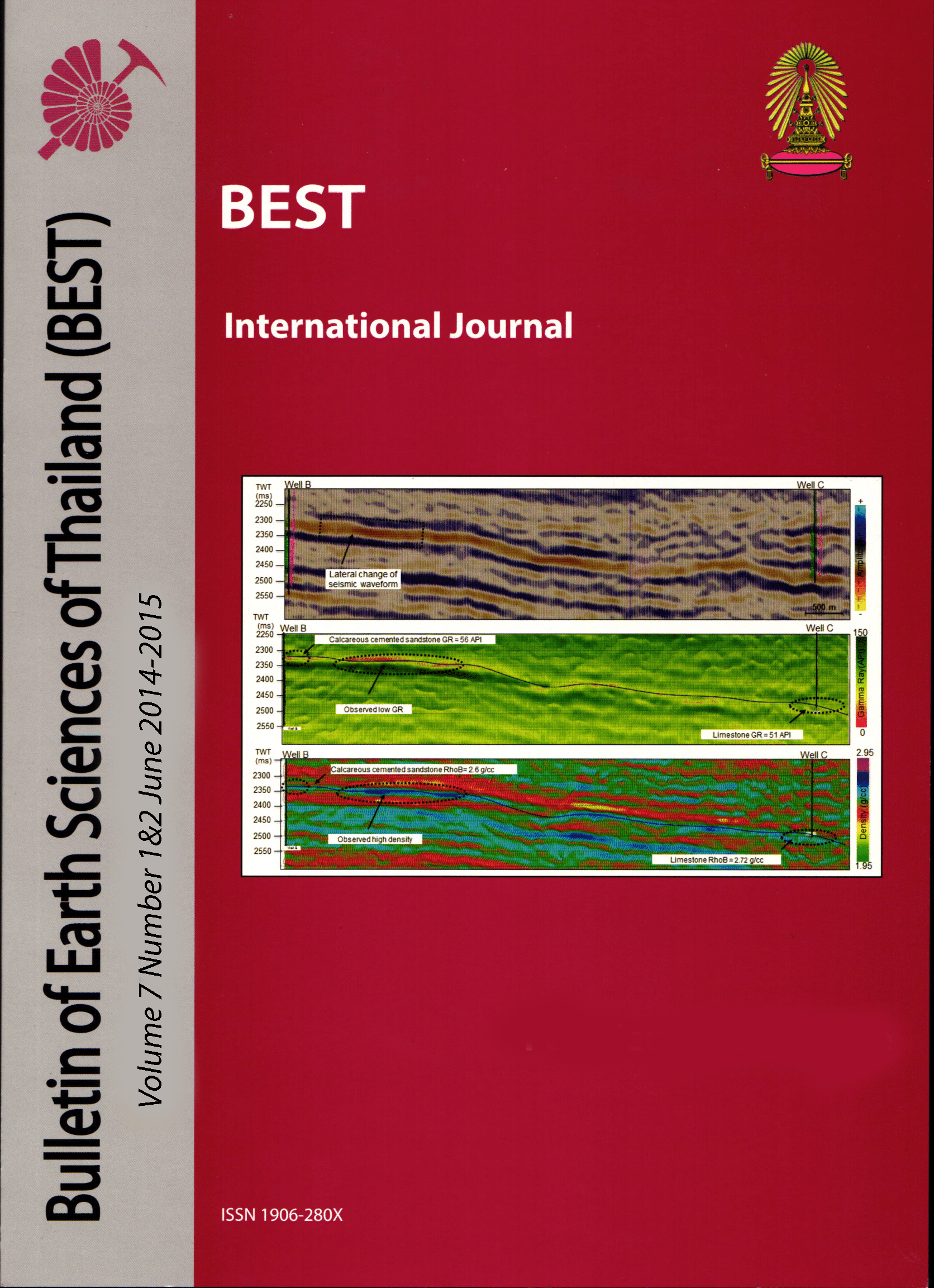Understanding the relationship between depositional facies, diagenetic evolution and reservoir character in The Cretaceous Shuaiba and Natih Formations of North Oman
Main Article Content
Abstract
The Shuaiba and Natih Carbonate Formations are the most important petroleum reservoirs in North Oman. The reservoir character is significantly heterogeneous and the entrained hydrocarbons accumulated in a complex suite of pore types, so as a result it is a reservoir association that is difficult to produce. This is a major challenge to the economics of exploration and enhanced reservoir recovery programs, focused on these complex reservoirs. To help resolve some of the complexity a study of core from well that intersects both the Natih and the Shuaiba was done. It uses an integrated combination of stable-isotope data, petrographic study and core observations to construct the diagenetic and poro-perm history and so evaluate the related influences of depositional facies and diagenetic evolution on porosity and permeability distribution in well A. Reservoir properties of both formations are controlled by different pore response/ mechanical-strength responses, which can be recognized from the different poro-perm relationships in the two formations. The Natih is shallower than the Shuaiba, but has a less consistent poro-perm trend, which is likely caused by a wider range of grain and crystal sizes. Natih is comprised of lagoonal bioclastic shales and open marine skeletal wackestones/packstones, which are finer grained, with higher mud contents and lesser corroded and friable fragments than the Shuaiba. Cm to dm-scale grain-rich layers in the Natih carbonates are generally encased by mudstones. Therefore, the contrast in mechanical stress response between shale and grain-rich intervals is obvious in Natih core. Groups of microfractures are obvious in the formation, especially in association with mud-rich zones. In contrast the Shuaiba is mainly comprised of upwards-coarsening rudist rudstone/floatstone units that were deposited in current-reworked rudist banks or shoals. The poro-perm trend of Shuaiba core-plug samples is similar to that seen in many siliciclastic reservoirs; high porosity results in high permeability, although the trajectory of this poroperm trend is somewhat steeper than a typical sandstone do to the overprint of a late-stage corrosive leaching event. Even so, reservoir quality of the Shuaiba is likely defined by a somewhat more predictable relationship between depositional facies and the diagenetic history, compared to the Natih. Some stylolites and isolated microfractures were observed in Shuaiba, but microfractures are more obvious in the Natih. ...
Article Details

This work is licensed under a Creative Commons Attribution-NonCommercial-NoDerivatives 4.0 International License.
Copyright © 2008 Department of Geology, Faculty of Science, Chulalongkorn University. Parts of an article can be photocopied or reproduced without prior written permission from the author(s), but due acknowledgments should be stated or cited accordingly.
References
Alsharhan, A. S., 2000, Stratigraphy, stable isotopes, and hydrocarbon potential of the Aptian Shuaiba Formation, UAE., SEPM Special Publication,v. 69, p. 299-314
Droste, H., 2010, High-resolution seismic stratigraphy of the Shu’aiba and Natih formations in the Sultanate of Oman: implications for Cretaceous epeiric carbonate platform systems: Geological Society, London, Special Publications, v. 329, p. 145-162.
Fontana, S., A. Ceriani, and F. H. Nader, 2012, Diagenesis and reservoir-quality evolution of the Permo-Triassic successions of the United Arab Emirates (UAE): Scientifica Acta, v. 5, p. ES 3-6.
Loosveld, R., A. Bell, and J. Terken, 1996, The tectonic evolution of interior Oman: GeoArabia, v. 1, p. 28-51.
Lucia, F. J., 1992, Carbonate Reservoir Models: Facies, Diagenesis, and Flow Characterization: Part 6. Geological Methods, AAPG Special Volumes, p.269-274
Warren, J., C. K. Morley, T. Charoentitirat, I. Cartwright, P. Ampaiwan, P. Khositchaisri, M. Mirzaloo, and J. Yingyuen, 2014, Structural and fluid evolution of Saraburi Group sedimentary carbonates, central Thailand: A tectonically driven fluid system: Marine and Petroleum Geology, v. 55, p. 100-121.


